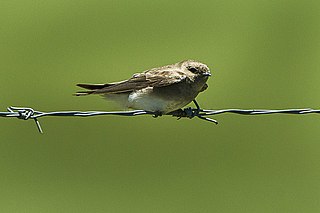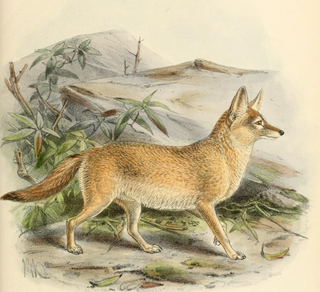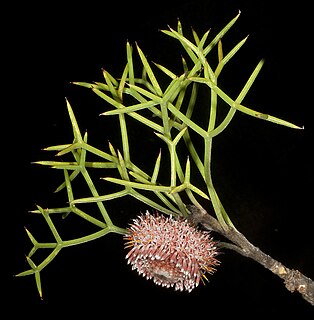Related Research Articles

Pleochroism is an optical phenomenon in which a substance has different colors when observed at different angles, especially with polarized light.

Agaricus bisporus is an edible basidiomycete mushroom native to grasslands in Europe and North America. It has two color states while immature – white and brown – both of which have various names, with additional names for the mature state.

Märzen or Märzenbier is a lager that originated in Bavaria. It has a medium to full body and may vary in color from pale through amber to dark brown. It is the beer traditionally served at the Munich Oktoberfest.

The brown-throated martin or brown-throated sand martin is a small passerine bird in the swallow family. It was first formally described as Hirundo paludicola by French ornithologist Louis Vieillot in 1817 in his Nouveau Dictionnaire d'Histoire Naturelle. It was formerly regarded as conspecific with the grey-throated martin under the name "plain martin".

The brown falcon is a relatively large falcon native to Australia and New Guinea.

Our Lady of Darkness (1977) is an urban fantasy novel by American author Fritz Leiber. The novel is distinguished for three elements: the heavily autobiographical elements in the story, the use of Jungian psychology that informs the narrative, and its detailed description of "Megapolisomancy", a fictional occult science. It was originally published in shorter form as "The Pale Brown Thing".

Apamea crenata, known as the clouded-bordered brindle, is a moth in the Noctuidae family. It is distributed throughout the Palearctic realm.

The pale-billed sicklebill is a species of sicklebill that belongs to the family Paradisaeidae, which contains the renowned birds-of-paradise.

The pale fox is a species of fox found in the band of African Sahel from Senegal in the west to Sudan in the east. It is one of the least studied of all canid species, in part due to its remote habitat and its sandy coat that blends in well with the desert-like terrain.

Isopogon cuneatus, commonly known as coneflower, is a species of plant in the family Proteaceae and is endemic to the south-west of Western Australia. It is a shrub with oblong to egg-shaped leaves with the narrower end towards the base, and flattened-spherical heads of glabrous pale to purplish pink flowers.
Banksia biterax is a species of dense shrub that is endemic to Western Australia. It has hairy stems, deeply serrated leaves and spikes of up to 200 pale to dark brown flowers.
Oligoryzomys destructor, also known as Tschudi's colilargo or the destructive pygmy rice rat, is a species of rodent in the genus Oligoryzomys of family Cricetidae. It is found along the eastern Andes from southern Colombia, through Ecuador, Peru, and Bolivia into northern Argentina. Its karyotype has 2n = 60 and FNa = 76.

The Malaysian giant turtle or Bornean river turtle is a species of turtle in the family Bataguridae. It is monotypic within the genus Orlitia. It is found in Indonesia and Malaysia.

The Ethiopian epauletted fruit bat is a species of megabat in the family Pteropodidae. It is found in Burundi, Chad, Republic of the Congo, Democratic Republic of the Congo, Eritrea, Ethiopia, Kenya, Malawi, Mozambique, Nigeria, Rwanda, Sudan, Tanzania, and Uganda. Its natural habitats are dry savanna and moist savanna. It is threatened by habitat destruction.

Gymnopilus liquiritiae is a mushroom in the family Cortinariaceae. The mushroom is widely distributed and grows in dense clusters on dead conifer wood. It has a rusty orange spore print, a bitter taste, and does not contain the hallucinogen psilocybin. One of its key distinguishing features is the lack of partial veil.

Lager is a type of beer conditioned at low temperature. Lagers can be pale, amber, or dark. Pale lager is the most widely consumed and commercially available style of beer.
Shades of brown can be produced by combining red, yellow, and black pigments, or by a combination of orange and black—as can be seen in the color box at right. In the RGB color model used to create all the colors on computer and television screens, brown is made by combining red and green light at different intensities. Brown color names are often not very precise, and some shades, such as beige, can refer to a wide variety of colors, including shades of yellow or red. Browns are usually described as light or dark, reddish, yellowish, or gray-brown. There are no standardized names for shades of brown; the same shade may have different names on different color lists, and sometimes the one name can refer to several very different colors. The X11 color list of web colors lists seventeen different shades of brown, but the complete list of browns is much longer.

Ale is a type of beer brewed using a warm fermentation method, resulting in a sweet, full-bodied and fruity taste. Historically, the term referred to a drink brewed without hops.

Isopogon teretifolius, commonly known as nodding coneflower, is a species of flowering plant in the family Proteaceae and is endemic to the southwest of Western Australia. It is an erect shrub with cylindrical, sometimes branched leaves, and flattened-spherical heads of hairy pinkish flowers.
References
| This article on a moth of the subfamily Symmocinae is a stub. You can help Wikipedia by expanding it. |